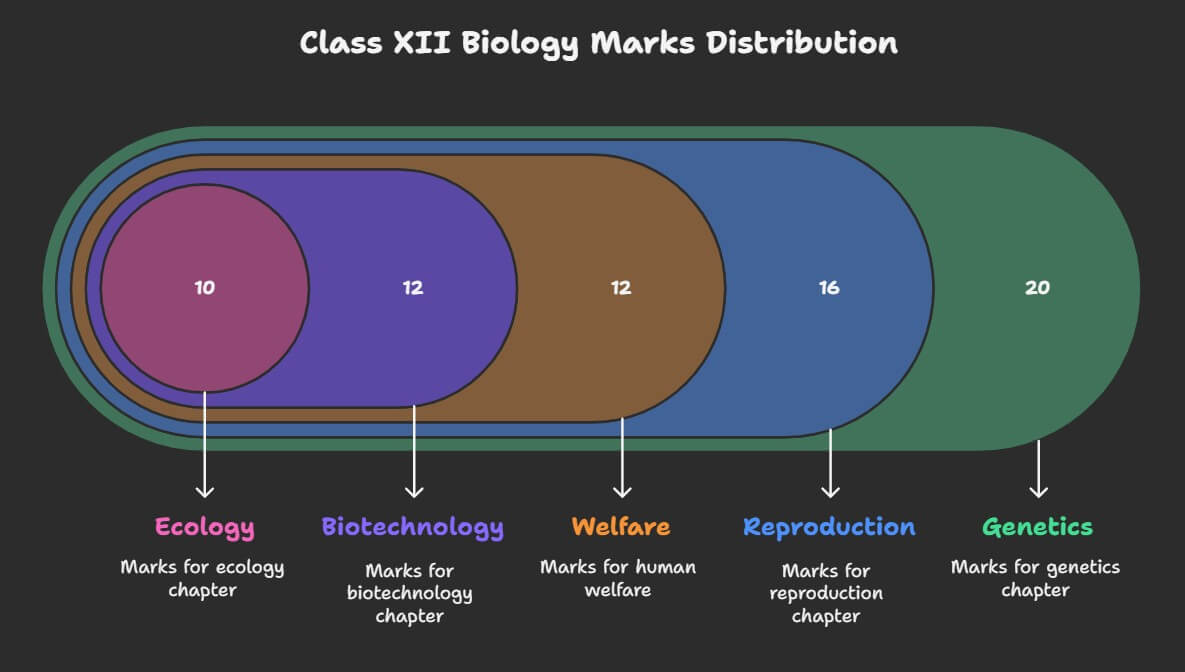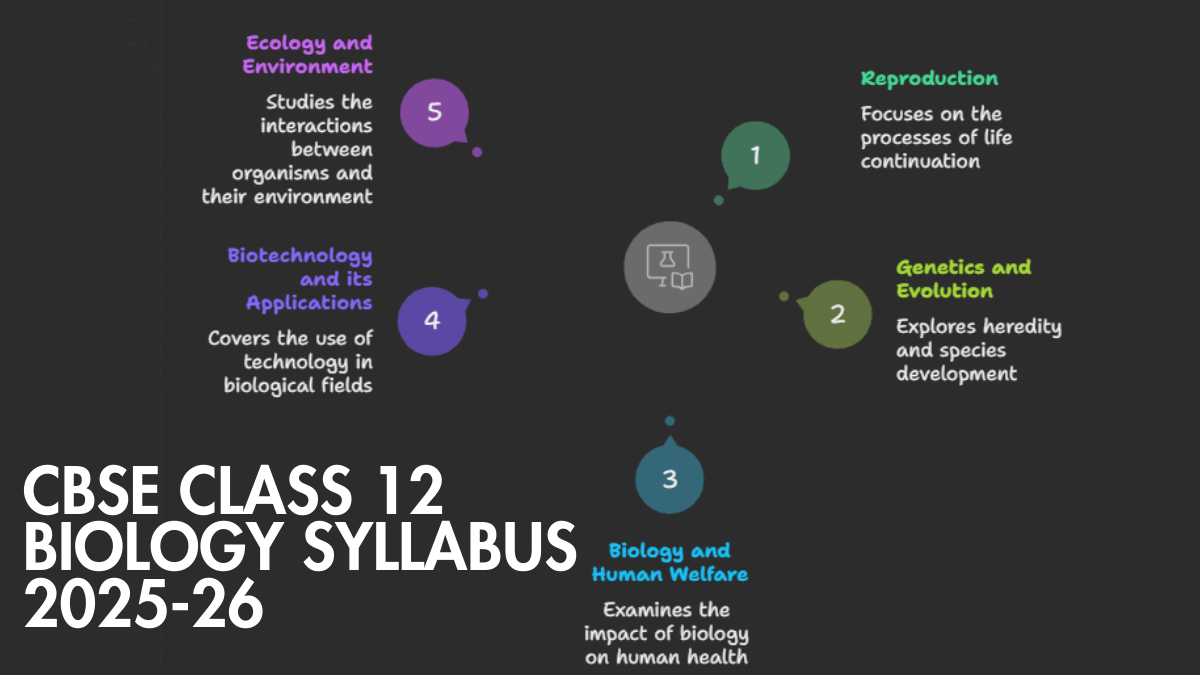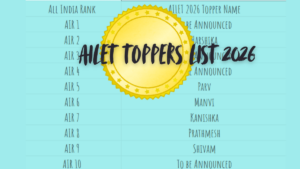The CBSE Class 12 Biology syllabus 2025-26 for the academic year 2024-25 is an important resource for all science students. It outlines all five units, including their subtopics and concepts, that will be studied throughout the year. The Biology 12th syllabus makes it easier to plan study sessions and ensure adequate preparation. Most of the chapters of this 12th class syllabus are included in the NEET Syllabus. Our article covers all modules, chapters, and subjects for both theoretical and practical exams (in PDF). The syllabus for the practical and written exam emphasizes structured study methods and practical applications, such as hands-on experiments and specimen identification.
CBSE Class 12 Biology Syllabus 2025-26
With the CBSE Class 12 Biology Board Exam set for March 2026, students should carefully look at the updated CBSE Class 12 Biology Syllabus 2025-26 to ensure they have covered all important topics. Students should make a proper strategy on a monthly and weekly basis to cover all the topics in a limited time. This blog contains the entire CBSE Class 12 Biology syllabus, including course material, assessment scheme, and question paper design.
CBSE Class 12 Biology Syllabus 2025 Marks Distribution
Students can also use the unit-wise mark distribution of the CBSE Class 12 Biology Syllabus 2025 to highlight relevant topics for last-minute revision. The syllabus’s PDF download link is provided at the end of this post for ease of access at the last.

CBSE Class 12 Biology Syllabus 2026
The Class 12 Biology syllabus is divided into 5 main units, each covering important concepts in detail. Every unit includes 3 to 4 chapters that help students build a clear understanding of the subject. From genetics and evolution to human health, reproduction, biotechnology, and ecology, the syllabus provides a complete picture of biological sciences. Each chapter is designed to strengthen concepts and prepare students for exams as well as future studies in the medical and science fields. With well-structured topics, this syllabus not only improves knowledge but also makes learning interesting and meaningful for Class 12 students.
Unit-VI Reproduction
Chapter 1: Sexual Reproduction in Flowering Plants
Flower structure; development of male and female gametophytes; pollination – types, agencies and examples; outbreeding devices; pollen-pistil interaction; double fertilization; post-fertilization events – development of endosperm and embryo, development of seed and formation of fruit; special modes- apomixis, parthenocarpy, polyembryony; Significance of seed dispersal and fruit formation.
Chapter 2: Human Reproduction
Male and female reproductive systems; microscopic anatomy of testis and ovary; gametogenesis -spermatogenesis and oogenesis; menstrual cycle; fertilisation, embryo
development up to blastocyst formation, implantation, pregnancy, and placenta formation (elementary idea); parturition (elementary idea); lactation (elementary idea).
Chapter 3: Reproductive Health
Need for reproductive health and prevention of Sexually Transmitted Diseases (STDs); birth control – need and methods, contraception and medical termination of pregnancy (MTP); amniocentesis; infertility and assisted reproductive technologies – IVF, ZIFT, GIFT (elementary idea for general awareness).
10
Unit-VII Genetics and Evolution
Chapter 4: Principles of Inheritance and Variation
Heredity and variation: Mendelian inheritance; deviations from Mendelism – incomplete dominance, co-dominance, multiple alleles and inheritance of blood groups, pleiotropy; elementary idea of polygenic inheritance; chromosome theory of inheritance; chromosomes and genes; Sex determination – in humans, birds and honey bee; linkage and crossing over; sex linked inheritance – haemophilia, colour blindness; Mendelian disorders in humans – thalassemia; chromosomal disorders in humans; Down’s syndrome, Turner’s and Klinefelter’s syndromes.
Chapter-5: Molecular Basis of Inheritance
Search for genetic material and DNA as genetic material; Structure of DNA and RNA; DNA packaging; DNA replication; Central Dogma; transcription, genetic code, translation; gene expression and regulation – lac operon; Genome, Human and rice genome projects; DNA
fingerprinting.
Chapter-6: Evolution
Origin of life; biological evolution and evidences for biological evolution (paleontology, comparative anatomy, embryology and molecular evidences); Darwin’s contribution, modern synthetic theory of evolution; mechanism of evolution – variation (mutation and recombination) and natural selection with examples, types of natural selection; Gene flow and genetic drift; Hardy- Weinberg’s principle; adaptive radiation; human evolution.
Unit-VIII: Biology and Human Welfare
Chapter-7: Human Health and Diseases
Pathogens; parasites causing human diseases (malaria, dengue, chikungunya, filariasis, ascariasis, typhoid, pneumonia, common cold, amoebiasis, ring worm) and their control; Basic concepts of immunology – vaccines; cancer, HIV and AIDS; Adolescence – drug and alcohol abuse.
Chapter-8: Microbes in Human Welfare
Microbes in food processing, industrial production, sewage treatment, energy generation and
microbes as bio-control agents and bio-fertilizers. Antibiotics; production and judicious use.
Unit-IX Biotechnology and its Applications
Chapter-9: Biotechnology – Principles and Processes
Genetic Engineering (Recombinant DNA Technology).
Chapter-10: Biotechnology and its Applications
Application of biotechnology in health and agriculture: Human insulin and vaccine production, stem cell technology, gene therapy; genetically modified organisms – Bt crops; transgenic animals; biosafety issues, biopiracy and patents.
Unit-X Ecology and Environment
Chapter-11: Organisms and Populations
Population interactions – mutualism, competition, predation, parasitism; population attributes – growth, birth rate and death rate, age distribution.
Chapter-12: Ecosystem
Ecosystems: Patterns, components; productivity and decomposition; energy flow; pyramids of number, biomass, energy.
Chapter-13: Biodiversity and its Conservation
Biodiversity-Concept, patterns, importance; loss of biodiversity; biodiversity conservation; hotspots, endangered organisms, extinction, Red Data Book, Sacred Groves, biosphere reserves, national parks, wildlife, sanctuaries and Ramsar sites.
CBSE Class 12 Biology Syllabus 2025 PDF
The CBSE Class 12 Biology Syllabus for 2025–26 is now available in PDF format at the official website of the Central Board of Secondary Education (CBSE). This comprehensive guide not only lists all the important chapters and topics but also explains the exam pattern, question paper structure, and internal assessment process.
It’s a handy resource for students to plan their preparation effectively and focus on key areas for scoring well. By going through this syllabus, students can understand how marks are distributed and what types of questions to expect in the board exams. Download the PDF from the link below to get started on your preparation journey.










 AILET 2026 AIR 1: Check Full Toppers Lis...
AILET 2026 AIR 1: Check Full Toppers Lis...
 AILET Result 2026 OUT, How to Download S...
AILET Result 2026 OUT, How to Download S...
 CUET PG Crash Course 2026: Subject-Wise ...
CUET PG Crash Course 2026: Subject-Wise ...














